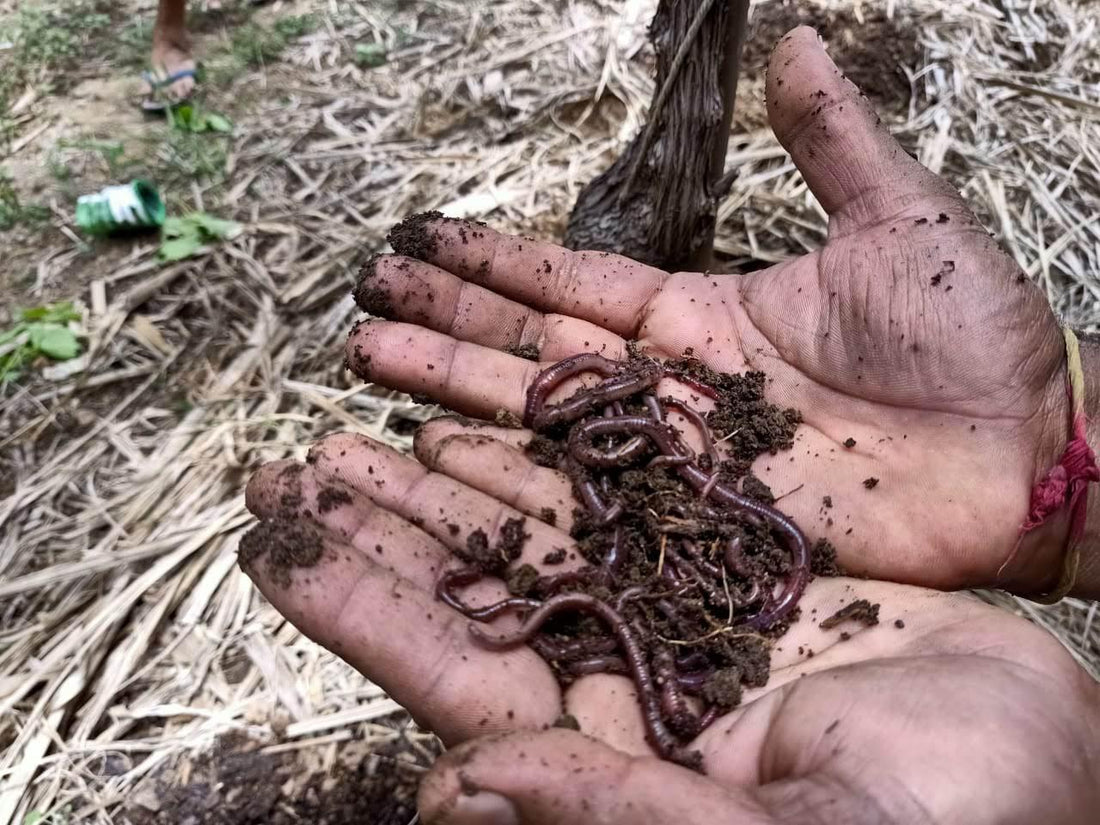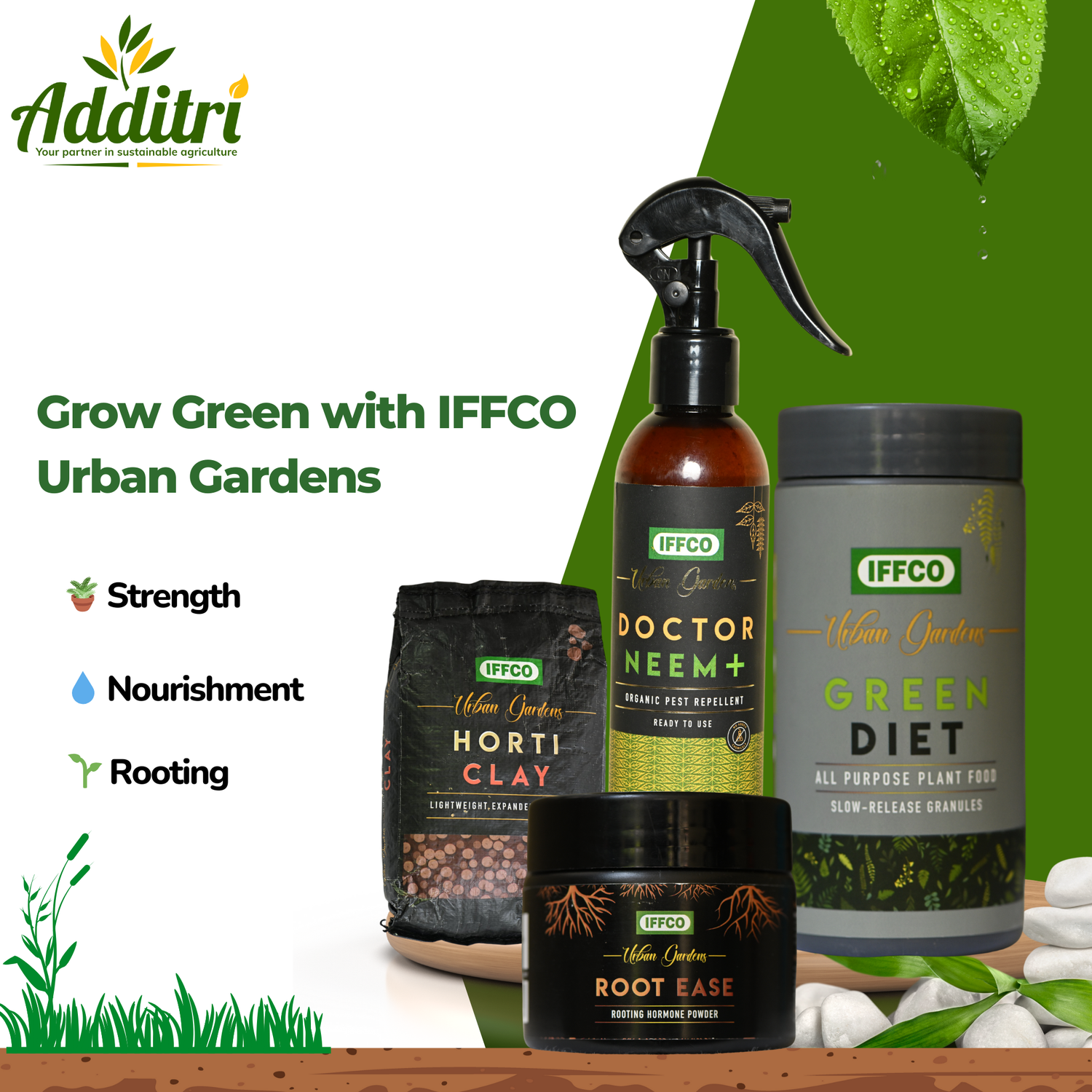
How Farmers Can Promote Earthworms to Boost Soil Fertility
Share
How Farmers Can Promote Earthworms to Boost Soil Fertility
Healthy soil is the foundation of successful farming. And at the heart of fertile soil are earthworms — nature’s original soil engineers. These tiny, silent workers play a vital role in improving soil structure, nutrient availability, water retention, and crop productivity.
But in today's high-input farming systems, earthworm populations are often depleted. The good news? Farmers can take conscious steps to bring them back — and let them do their magic.
Why Earthworms Matter for Soil Fertility
- Aeration & Drainage: Their burrows create channels that improve airflow and water movement.
- Nutrient Cycling: They feed on organic matter and excrete nutrient-rich castings (vermicompost).
- Microbial Activity: Their presence boosts beneficial soil microbes, vital for plant health.
- Improved Structure: Earthworm tunnels help bind soil particles into aggregates, reducing erosion.
Farmer-Friendly Practices to Encourage Earthworms
1. Use Organic Matter Generously
Earthworms feed on decomposing organic materials like crop residues, compost, and animal manure.
- Apply compost or farmyard manure regularly.
- Leave crop residues on the field after harvest (don’t burn them).
- Grow green manure crops like sunn hemp or cowpea.
- Use biofertilizers like Additri Liquid Consortia.
Tip: Earthworms are especially attracted to partially decomposed organic matter — a great reason to use compost heaps.
2. Reduce Tillage
Frequent ploughing destroys earthworm burrows and kills them directly.
- Switch to minimum tillage or zero-till practices.
- Use mulch-based systems or seed drills that don’t disturb the soil deeply.
Bonus: No-till farming also reduces fuel costs and improves soil moisture retention.
3. Avoid Chemical Overuse
Pesticides, fungicides, and excessive chemical fertilizers can harm earthworm populations.
- Use bio-fertilizers, vermicompost, or microbial inoculants.
- Shift to Integrated Nutrient Management (INM) or Organic farming methods.
- Minimize use of non-biodegradable agrochemicals.
Natural inputs like Jeevamrut, Panchagavya, and liquid microbial consortia are safe for earthworms and support their activity.
4. Mulch and Cover Cropping
Cover crops like legumes protect the soil, fix nitrogen, and feed soil organisms.
- Use live cover crops in off-seasons.
- Apply straw mulch or crop waste mulch to regulate soil temperature and moisture.
Earthworms thrive in cool, moist environments — mulch acts like a protective blanket.
5. Maintain Moist Soil Conditions
- Use drip irrigation to keep moisture balanced.
- Install rainwater harvesting ponds to ensure water availability during dry periods.
- Avoid over-irrigation, which can drown earthworms.
6. Encourage Agroforestry and Intercropping
Trees and diverse plants promote soil biodiversity and a stable microclimate.
- Plant nitrogen-fixing trees like Gliricidia or Subabul along field borders.
- Use intercropping systems to maintain year-round ground cover.
7. Vermiculture Pits for On-Farm Use
Farmers can create their own vermiculture units using cow dung, crop waste, and red wigglers (Eisenia fetida).
- Use this vermicompost in the field to reintroduce earthworms and improve soil biology.
- It’s a low-cost, high-impact soil amendment.
The Results: Better Soil, Better Yields
- Improve soil fertility naturally.
- Increase water retention and reduce irrigation needs.
- Reduce chemical input costs.
- Achieve sustainable yields even under erratic weather.
Final Thoughts
Regenerating soil with the help of earthworms is not a luxury — it’s a necessity for long-term farm sustainability. These practices are low-cost, eco-friendly, and proven effective across climates and crops.
Earthworms are not just a sign of healthy soil — they help create it. Let’s give them the space, food, and environment they need to thrive.
Powered by Additri Bio Fertilizers — Sustainable Inputs for Soil Regeneration.

